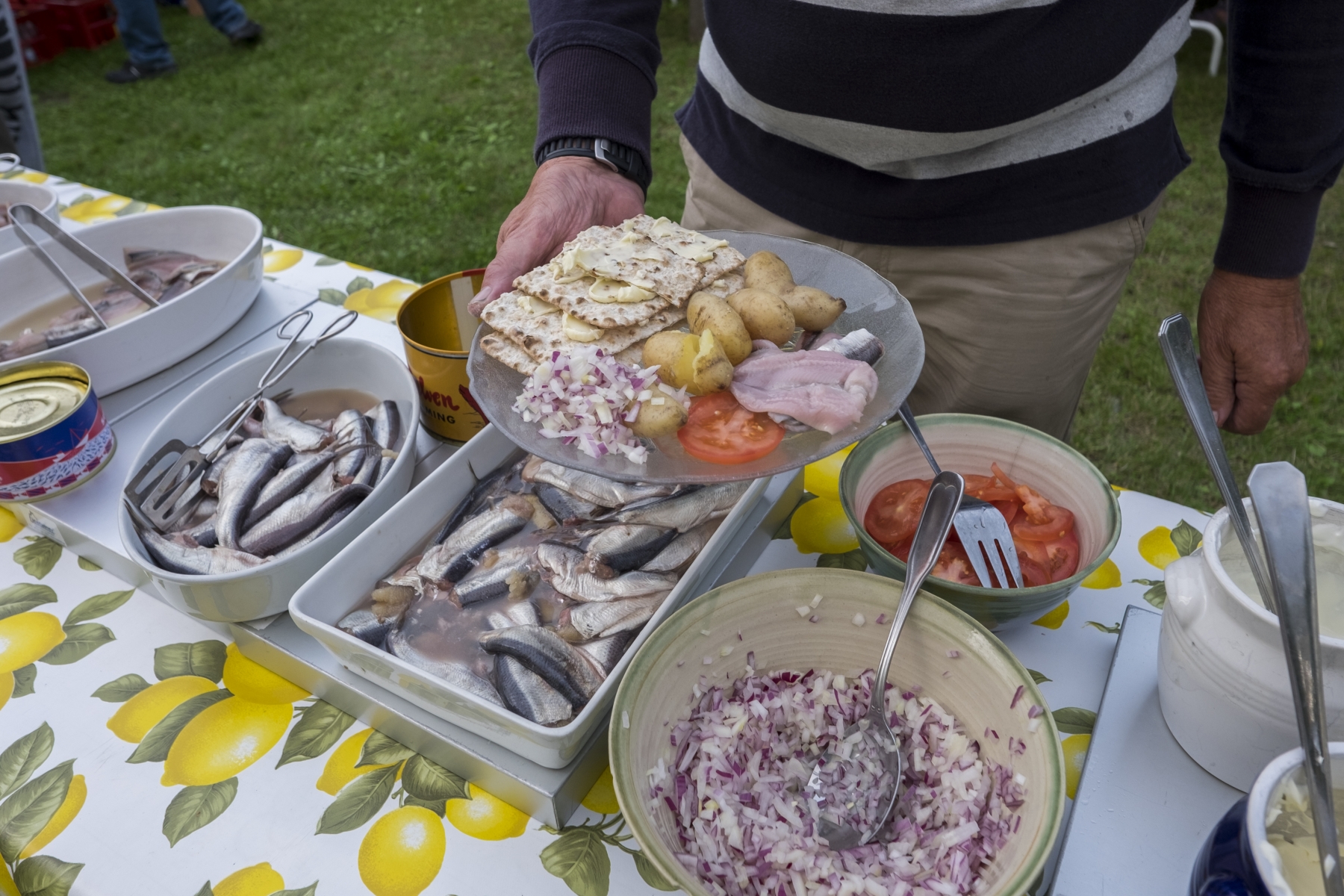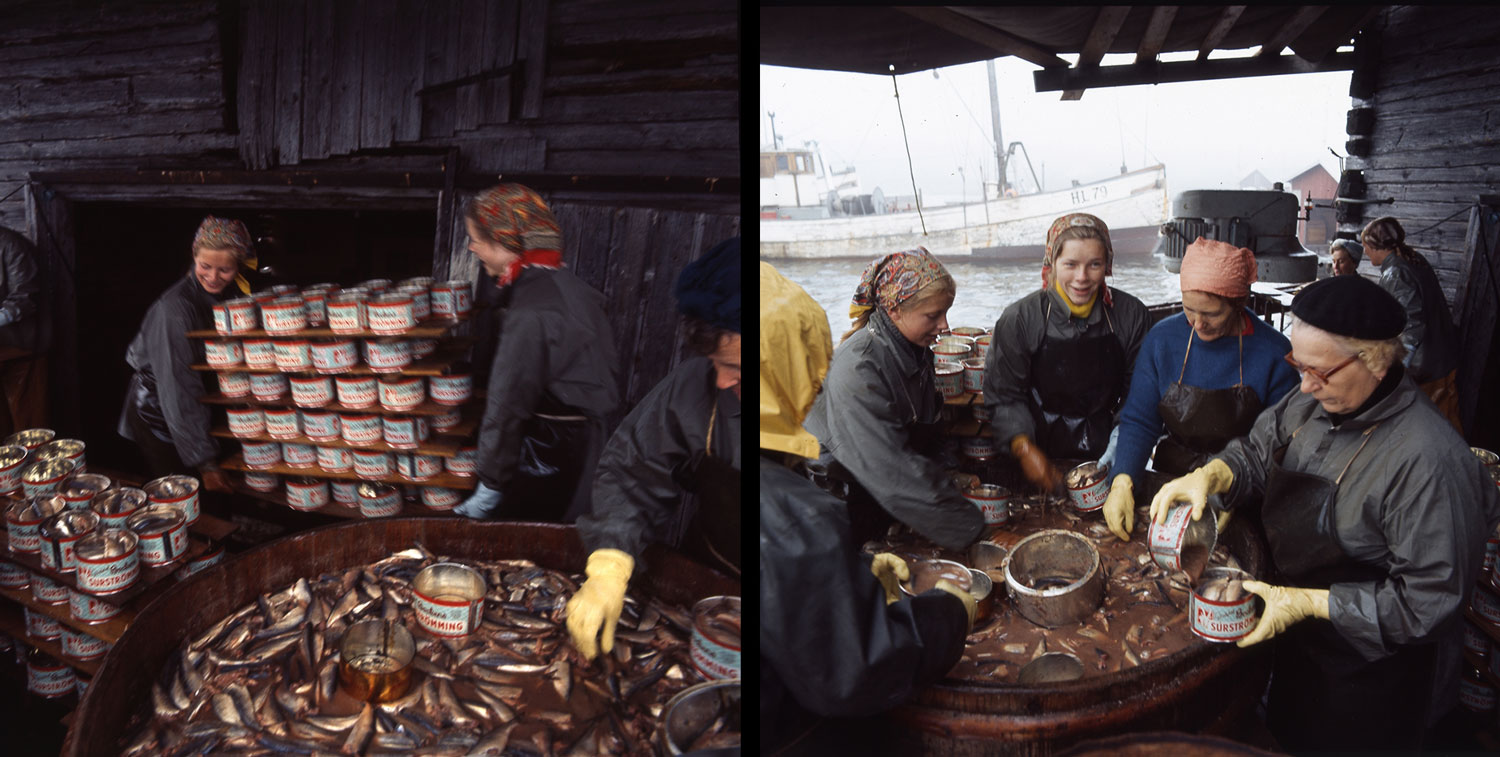- Startpage
- In English
- The Inventory
- Surströmming
Surströmming
Surströmming is a fermented herring that used to be part of everyday Swedish cuisine. Today, it is considered a delicacy with a strong connection to northern Sweden.
Location: Nation wide

Surströmming is a lightly salted fermented herring that was traditionally a staple dish in poorer households along the coast of northern Sweden. Since the latter part of the 20th century, it has been considered a delicacy, particularly in northern Sweden. Today, surströmming is commonly eaten only once a year. The dish is often served with soft or crisp flatbread, boiled potatoes, tomatoes, and dill. The surströmming dinner is considered a festive occasion, associated with many traditions and ceremonies.
Surströmming is made from Baltic Sea herring that is caught from May to June. During this period, the herring is about to spawn but has not yet fattened. The fish is brined for one or two days before removing the head and the gut. The herring is then placed in barrels of fresh brine with a lower salt content, at a temperature of around 15–18°C. Under the right conditions, the lactic acid in the spine of the herring is activated, fermenting the herring and making it soft. The process takes three to four weeks. In early August, the herring is canned and the fermentation continues.
Fermentation as a method of preserving food has a long history in Sweden. The earliest archaeological finds of fermentation in southern Sweden are about 9,000 years old. Fermented fish has been most common in northern and western Sweden. Historically, smaller fish such as common roach, European perch, and arctic char were also fermented. From the 15th century until the late 18th century, there was widespread fishing and fermenting of herring along the northern Swedish coast, primarily by fishermen based in Gävle. During the 19th century, surströmming production decreased considerably. The fermentation process was further developed during this period, and surströmming started to be canned which allowed it to be distributed all over Sweden.
Today, there is a renewed interest in surströmming from consumers as well as producers. Many of the traditions and dinners take place in the home. There are also organizations that disseminate knowledge about the history and the traditional methods of producing surströmming. Along Sweden’s northern coast, several facilities still prepare surströmming according to traditional methods and store the fish in wooden barrels.

